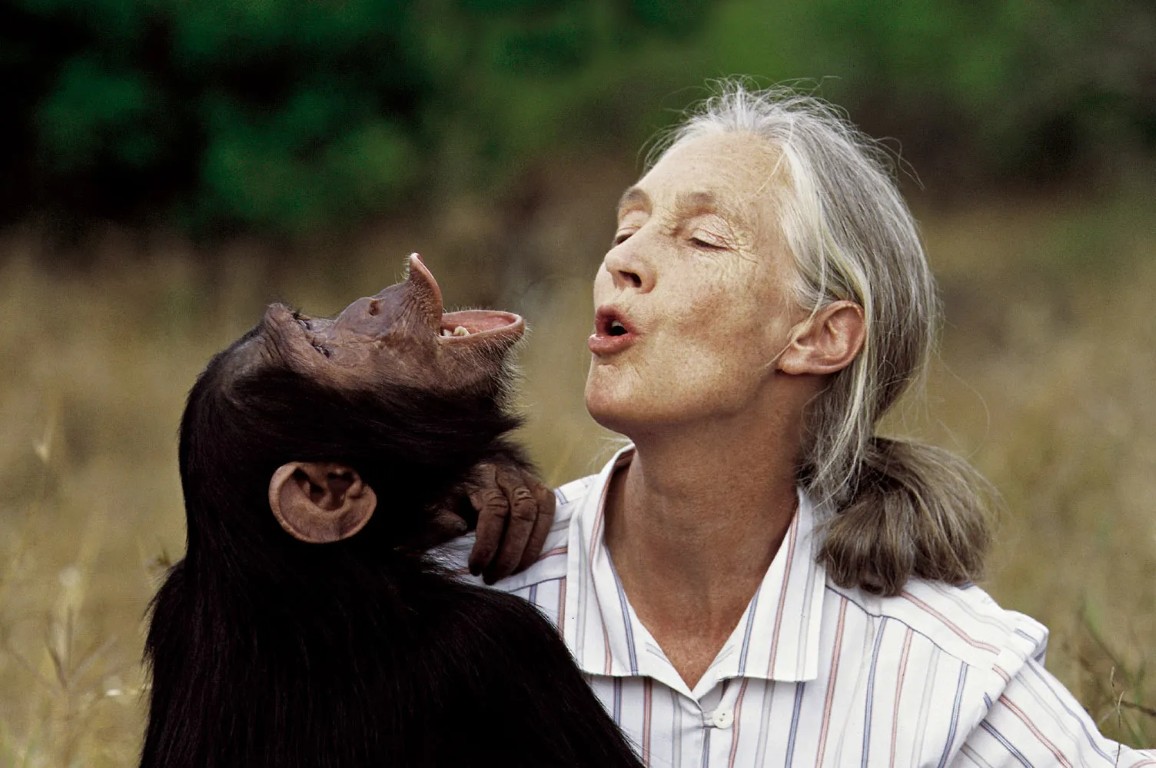
"Growing up in a family with two parents who studied anthropology and archaeology, one of whom taught a physical anthropology course at the local community college, some of the earliest people I thought of as celebrities were palaeoanthropologist and archaeologist Louis Leakey, as well as his protégés Dian Fossey and Jane Goodall. These two women challenged the way we think about primates as social beings who live in communities not all that dissimilar to our own."
"Born in 1934 in Hampstead, London, Goodall became interested in animals after her father gave her a stuffed toy chimpanzee, which she named Jubilee, rather than a traditional teddy bear. This fascination led her to the White Highlands in the Colony and Protectorate of Kenya in 1957. A life-changing meeting with Leakey led to several opportunities for her to study primate behavior and primate anatomy with experts Osman Hill and John Napier, and later to earn a PhD in Ethology from the University of Cambridge."
Jane Goodall spent nearly six decades studying primates, authored thirty-two books (fifteen for children), and appeared in over forty documentary films. Born in 1934 in Hampstead, London, Goodall developed an early fascination with animals after receiving a stuffed chimpanzee named Jubilee. She traveled to Kenya in 1957, met Louis Leakey, studied primate behavior and anatomy with Osman Hill and John Napier, and later earned a PhD in Ethology from the University of Cambridge. Goodall emphasized primates as social beings living in complex communities, inspired girls to pursue science, and used her platform to affirm that lives matter and have purpose. Dian Fossey’s work and fate contrasted with Goodall’s longer career.
Read at Roger Ebert
Unable to calculate read time
Collection
[
|
...
]